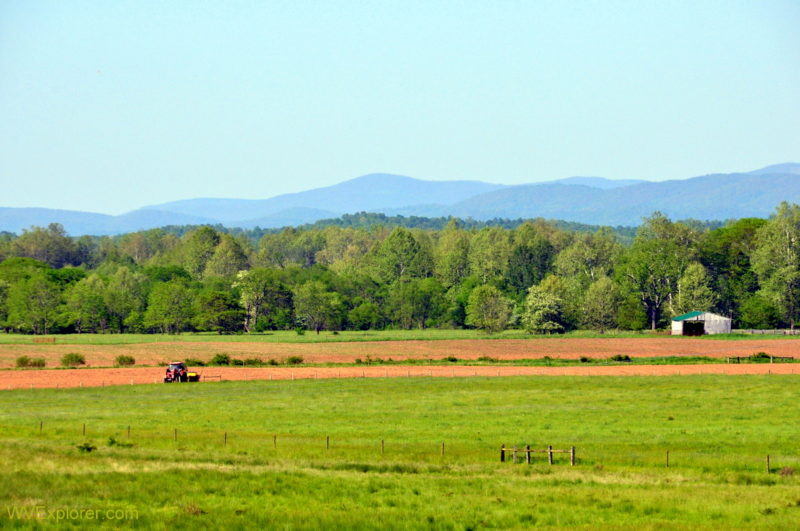Hazelwood, West Virginia
Hazelwood is the only community in Randolph County that has a twin. Unbeknownst to most, Hazelwood is a small community south of Elkins and the site of an old lumber mill operation near Big Tory Camp Run. According to local historian Don Rice’s reference manual “Randolph 200” Hazelwood, part of the Beverly District, is a community located off of the old Beverly Pike, five miles south of Elkins. However this isn’t the only Hazelwood in Randolph County, according to Rice’s book there was a lumber mill at the mouth of the Big Tory Camp Run on Dry Fork River in the early 1900s. This lumber camp became known as Hazelwood as well.
Throughout the first half of the Twentieth century there was a post office as well as the Dry Fork Railroad Company which serviced the United Lumber Company stationed there. This Hazelwood, although predominantly unknown today, is part of the Dry Fork District and it lies between Harman and Job on the Dry Fork River.
Roy Mullenex, Whitmer resident and one of few remaining county residents who can remember Hazelwood, said when he was a child in the 1930s he passed the old saw mill which was no longer in operation at the time. “I can remember when I was a boy riding to Whitmer with my daddy and I asked him about this mill pond they had over there,” he said. “There was all of these boards that went across the pond to hold the water.” According to Mullenex, the pond was used to wash the logs before sawing them for shipment. “That was a common practice in those days,” he said. “They had to wash the logs to protect the saw blades. They would get all of the gravel, dirt, and bark off before sawing them.”
Mullenex said the few who lived in the Hazelwood area have either passed away or moved. According to Mullenex, Hazelwood, like so many other lumber mills in the region at the time, was located “way out into the holler.” Residents could get supplies and groceries by either coming out into Job or ordering them off of the train. For about thirty years people could order off the train. The train had other places to stop along the way like Harman, Job, and Whitmer. It even had stops right along farmers’ fields. The train provided a valuable service to area residents. It brought revenue and jobs with the lumber mills and provided residents a connection to places past the steep hills and nearby mountains.
“That train was a big service, it was a big boom to the area, and not just because of the lumber mills,” he said. “It brought people in and produce out.” Mullenex said people living throughout the Whitmer, Job and Hazelwood area would sell produce and cattle on the train. “I can remember my Grandma used to raise turkey and send them on the train to Philadelphia around Thanksgiving.”
The Hazelwood located south of Elkins is more familiar to most who frequent the county. However, many people probably do not know that Hazelwood was founded well before West Virginia and the majority of residents sided with the confederacy. Louellen Hart, longtime Beverly District Hazelwood resident, said Hazelwood’s history is colored with confederate sympathizers and teamster union officials. Hart’s husband, Virgil, was a Hazelwood native whose family is among the original settlers of the town which she said is a “child” of Beverly. She said Hazelwood changed hands between the union and confederates on a regular basis during the Civil War.
Hart added that at one time her family had several pieces of confederate memorabilia. She said one of her husband’s ancestors, Edward Hart, originally from Hopewell Township, New Jersey traveled with the confederate army from what is now Augusta County, Virginia to present day Hazelwood to “get a line on Yankee troop movements,” and then walked back. She said he was a confederate soldier through and through.
But the Hart family and Hazelwood were not associated with the confederates alone. Teamsters traveling through the region often boarded at the original Hart homestead in Hazelwood. Teamsters were the pioneers of current day labor laws and according to Hart, Hazelwood was a safe haven for them as they made their way from job site to job site throughout the county. The original homestead was also used as a regular boarding house for a long time. Hazelwood was just a mud road and lots of brush at the time. The town’s name comes from the Hazelwood which grew wild throughout the small community. It’s named for the hazel brush and hazel nuts that grew in abundance there.
Today, Hazelwood, located near Beverly, is part of a growing residential community. But Hazelwood, located in the northern part of Randolph County near Harman, is somewhere off the beaten path.
Article Credit, 2015: Leah Dietz, Staff Writer for The Intermountain
